After the inferno
I was in Greenville, northern California when flames ripped through more than 100 homes, turning countless memories into ash as part of one of the state's worst wildfires ever.
I watched in shock as a post office, fire station, bank, museum and other businesses were incinerated and reduced to smoldering piles of rubble. Dead animals lay on roadsides, some scattered around on properties.

I can’t help but wonder how those who stayed behind survived this intense fire storm as it tore through town.
I’ve been photographing wildfires for years and I have to say, the Dixie fire is a beast. It’s true that every year we get explosive wildfires in California, but the type of fire behavior I’m seeing now is a new level of extreme. The trees and brush are extremely dry (partly due to the fact that we’re in a drought), and it’s getting hotter, windier and overall less hospitable.

I watched firefighters make futile attempts to stop 350-foot (105-meter) high flames towering over them - saving a few homes and losing most.
Even a full day after Greenville burned, the fire was roaring. At one point, it split into four separate huge ash columns, effectively surrounding the entire town, which had already burned at this point. Monster fires like the Dixie create their own weather, making them incredibly unpredictable.
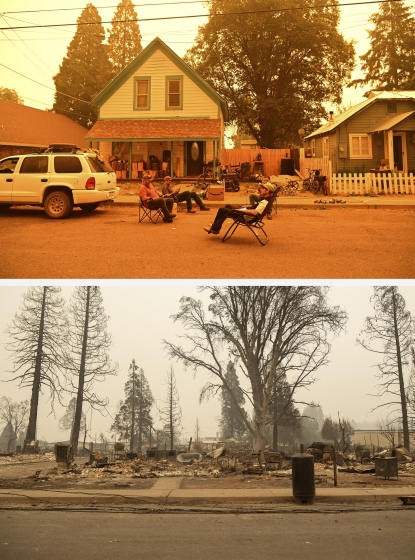 (AFP / Josh Edelson)
(AFP / Josh Edelson)At one point, I found myself pinched on a road between two sections of columns of flame -- essentially a wall of fire.
With nowhere to go and no fire crews to be seen, I was forced to drive through this glowing corridor. I went into emergency mode and started thinking about where I had put my fire shelter and where the best safety zone might be -- even though there wasn't one. I just had to drive through.
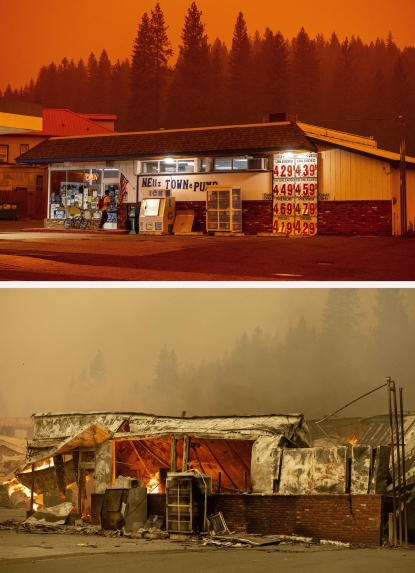
Fire wasn’t the only threat. It was also very windy. Chunks of burnt tree parts were raining down on my truck so hard I thought my windshield could crack. I drove through showers of glowing embers and saw a small tornado of ash that could easily have ignited. I navigated smoke so thick I couldn’t even see the markings on the road.
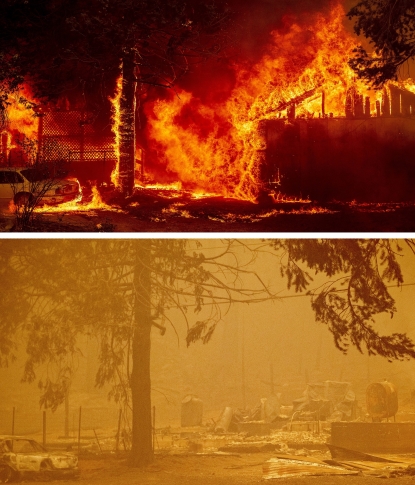
But none of that was the biggest threat. Huge smoldering trees burn down to the roots and fall often in wildfires. You can hear the constant cracking sounds in the distance and sometimes they block roads. One tree landed on a firefighter hand crew causing significant injuries. One fell right in front of me while I was photographing a burning business.
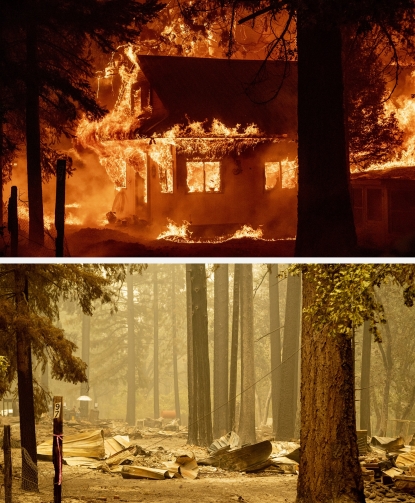
Fortunately, I have years of experience in understanding fire behavior and weather patterns, so I know how to maximize my chances for survival.
The residents of these small rural towns and communities are vulnerable and are often told to leave under a mandatory evacuation order when there’s an imminent threat, like there was in Greenville -- and for good reason.
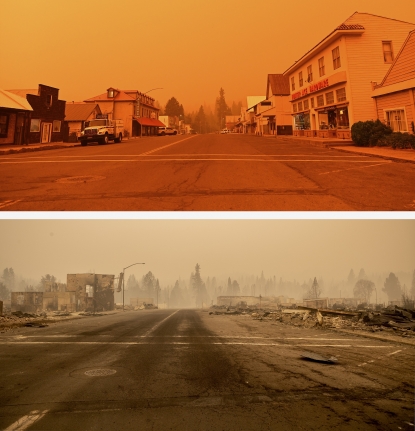
In addition to my regular fire coverage, I wanted to try something completely different. I tried to create a series of before and after photos to show how devastating wildfires can be. The challenge, of course, is that I have no idea what will burn before, so I have to make my best predictions.
In Greenville, about a week before it burned, the smoke blotted out the sun and turned the sky a dark red. It was then that I made most of my "before" pictures. I even went inside the town bar where, in spite of a mandatory evacuation order, residents were drinking and playing dice. They survived, the bar didn’t.
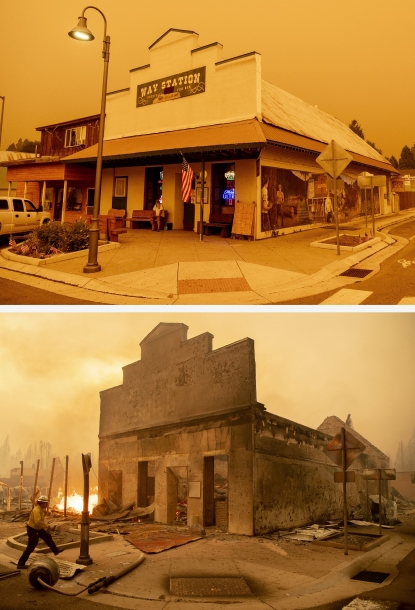
I hope that with this series, people can have a stronger understanding of how intense and dangerous wildfires can be. More importantly, I hope the stories I tell with my camera help paint a picture that shows what it’s like to be in the middle of these intense fire storms.
One minute you may be having some drinks at a bar with friends, and the next the entire town is reduced to ashes.


